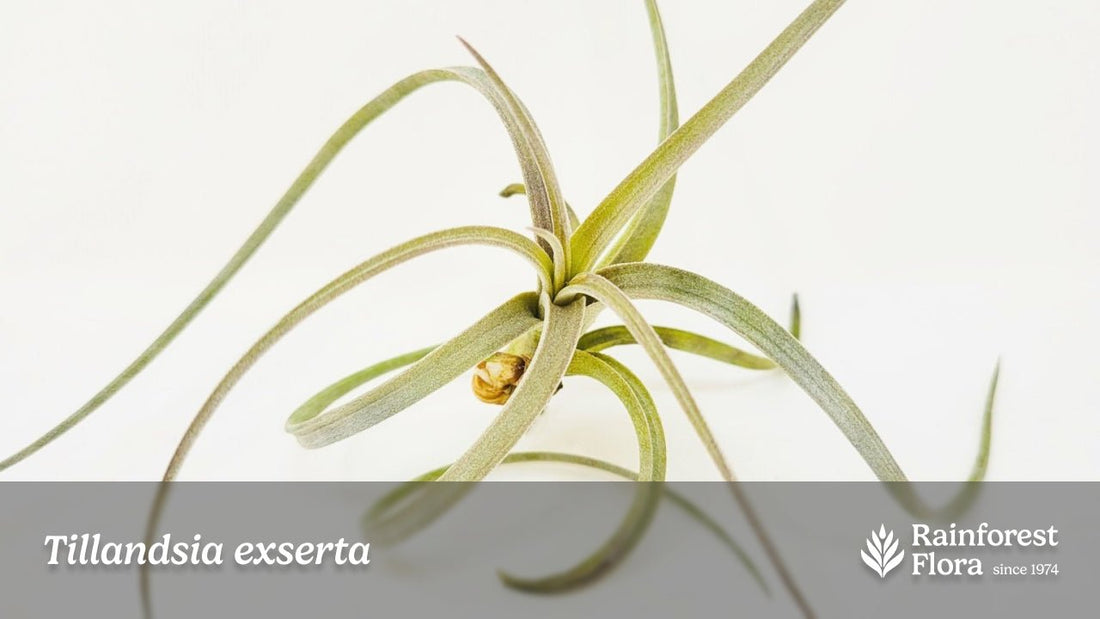
Notes from Tillandsia II: Tillandsia exserta
Share
When our co-founder, Paul Isley, wrote Tillandsia II, his guide to Tillandsia species, cultivars, and hybrids, we never imagined its impact. Thousands of plant lovers have told us how this book shaped their horticultural journey.
To celebrate its legacy, we'll share excerpts here, one plant at a time. If you're new to Tillandsia, we hope it sparks a lifelong love. –the Rainforest Flora Team
Tillandsia exserta
Fernald; 1895
(ex-SEHR-tah)
Subgenus: Tillandsia
Exserta is from the Latin and is a reference to the inflorescence which is relatively tall and therefore "exserted" from the plant.
Tillandsia exserta grows in hot, dry woods and thickets in Northern western Mexico at altitudes from sea level to 50 meters.
This attractive species has leaves that grow in a dense rosette. They are covered with a dense tomentum of subappressed, cinereous scales. The leaf blades are narrowly triangular, long and attenuate, and involute. They recurve so much that sometimes they coil (make a circle).
The scape is erect, tall, and can be simple or compound. The inflorescence is wine red and visible from a great distance. Any spikes on the inflorescence are suberect and linear-lanceolate. The floral bracts on the spikes are imbricate. The corollas are indigo.
Tillandsia exserta can vary in size from clone to clone. The plants we have grown over the years are from specimens that are over 60 cm in diameter and height. When the plants get large, they make a stunning presentation.
This is an easy species to cultivate. It prefers bright light and even direct sunlight is all right in coastal locations. Care should be taken that it is not kept too wet or too long. If placed in a windy environment, it will do fine as long as it doesn't dry out too much. In its natural environment, it is subject to periods of intense heat and so will do well in hotter climes again, as long as it has access to sufficient moisture to keep it from dehydrating.

